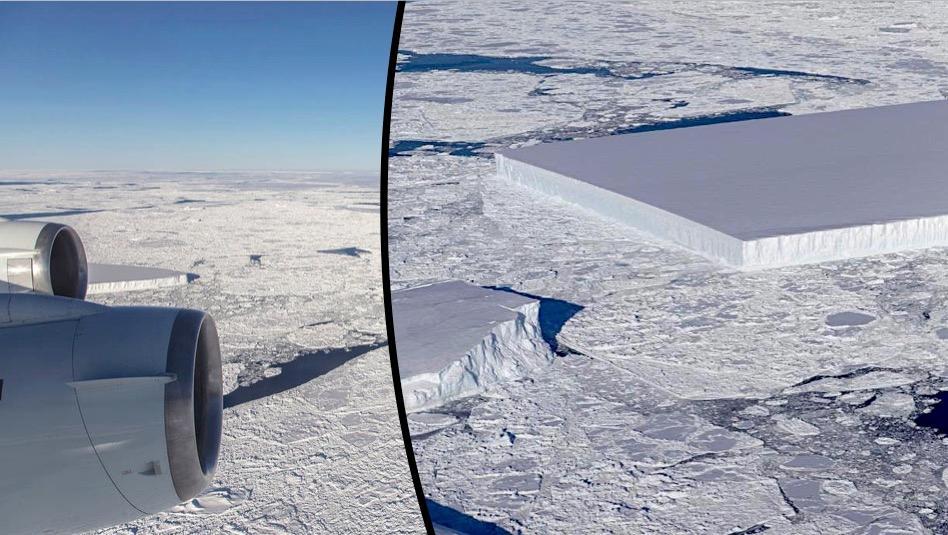An unusual, rectangular iceberg floating in a sea off Antarctica was captured by one of NASA’s research planes.
The aircraft flyover was part Operation IceBridge, NASA’s longest-running aerial survey of polar ice. It flew over the Weddell Sea in the northern Antarctic Peninsula on Oct. 16, 2018.





